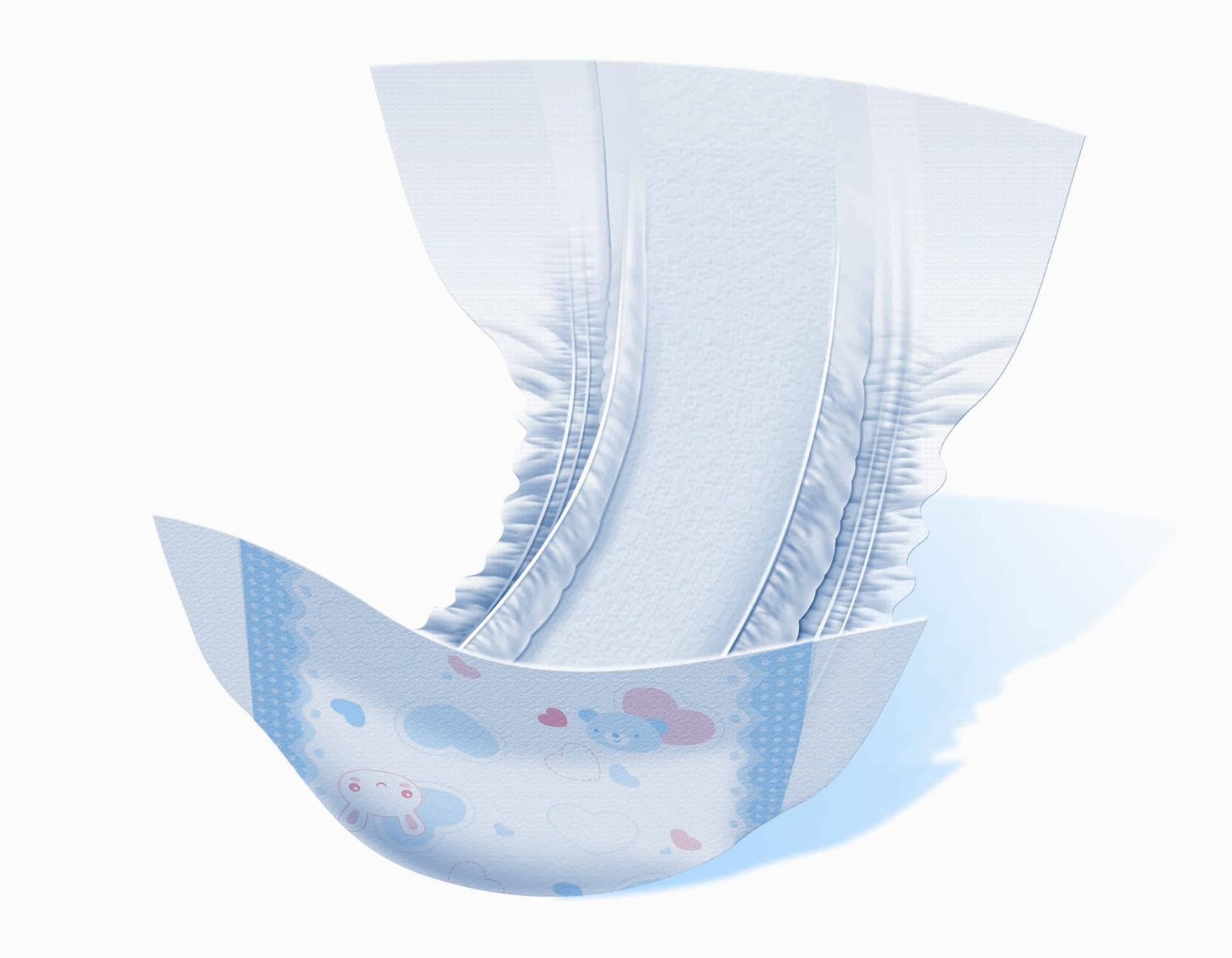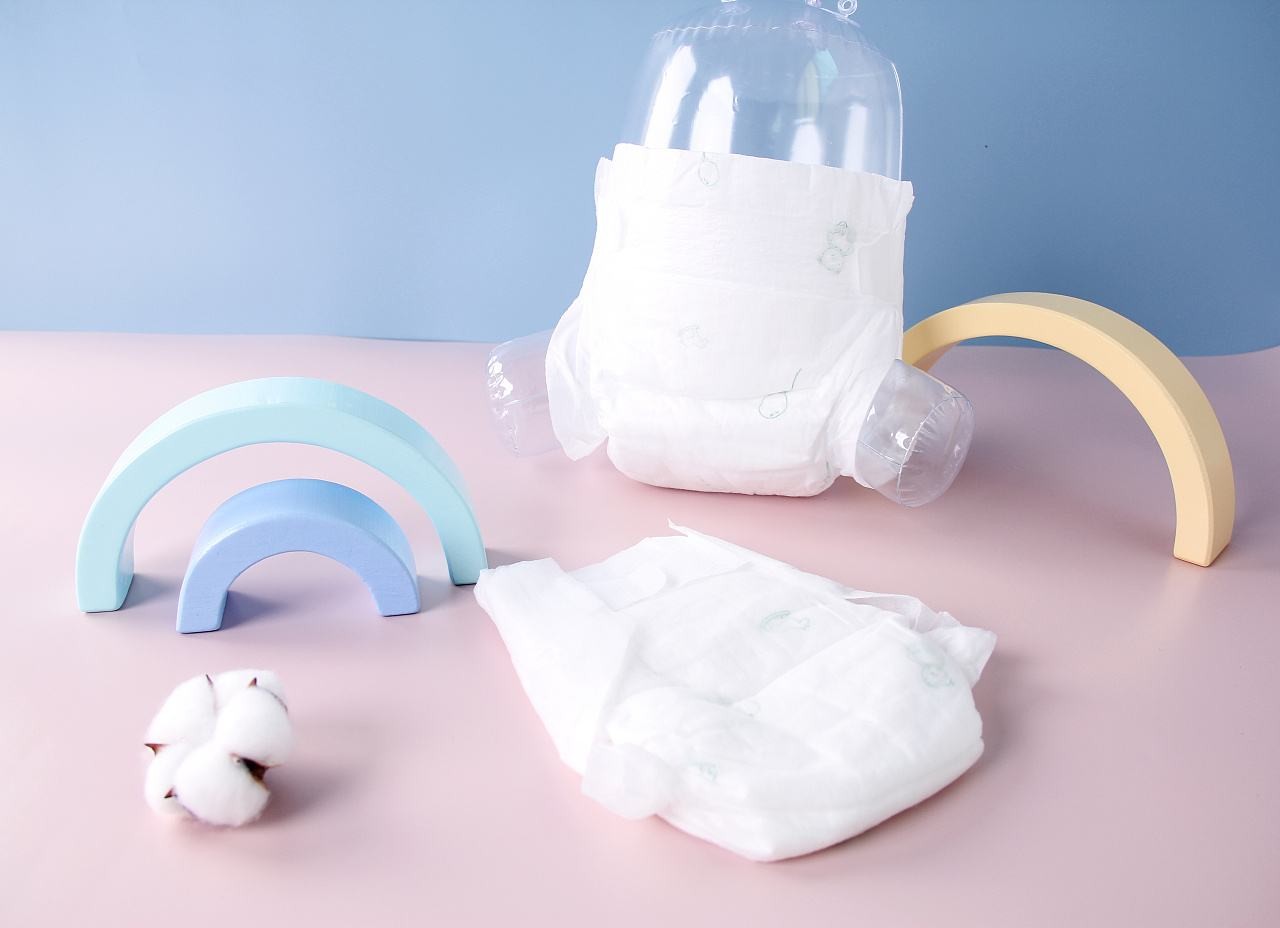Diapers are essential consumer goods for parents of babies. They are more breathable and hygroscopic than diapers. They are not easy to produce diaper rash and do not have to worry about the breeding of bacteria. The core is the most important part of diapers. Its quality directly determines the quality of water absorption and air permeability of diapers. Here are the advantages and disadvantages of the four cores.
Wood pulp core is composed of wood pulp and super absorbent resin, without layering.
Advantage:
This type of diaper will dredge urine into the core through wood paddle fiber, and then lock urine through the water locking effect of polymer material (also known as water absorption attractor), so as to keep the surface of diaper dry after absorbing a certain amount of urine.
Disadvantages:
Due to the existence of wooden oars, some faults and lumps cannot be solved. However, wood paddle fiber is widely used in some international brands of diaper products because of its excellent drainage performance to urine.
Thinness: ★
Water absorption: ★★★★
Air permeability: ★★★★
Softness: ★★★
Uplift and fault: ★
This kind of structure is similar to sheet lamination (polymer water absorption primer layer and wood pulp layer are similar to the lamination of flat paper, plus nonwovens). The laminated structure makes the diapers not as loose as the composite structure of polymer and wood pulp, which increases the water absorption and improves the structural design.
Advantage:
The wood pulp layer dredges urine into the core through the wood paddle fiber, and then absorbs it through the polymer water absorption primer layer. The double-layer has strong water absorption capacity and large water absorption capacity.
Disadvantages:
Due to the laminated structure and non-woven fabric, this kind of diaper will be soft.
Thinness: ★★
Water absorption: ★★★★
Air permeability: ★★
Softness: ★★★★
Uplift and fault: ★★★

Glue core is a mixture of hot melt adhesive, non-woven fabric and high molecular water absorbent resin, with layering.
Advantage:
This diaper contains a large amount of macromolecule to ensure its absorption. After absorbing water, it will expand as a whole. Due to the existence of adhesive, it will become flat and will not agglomerate, and it can maintain its original shape after liquid absorption.
Disadvantages:
As the diaper expands after absorbing water, the air permeability is poor after absorbing water. Excessive heat and humidity will make the baby's hips uncomfortable. Factories with insufficient technical capacity will leave the smell of glue, or diapers will harden after absorbing water, and the production cost is relatively high.
Thinness: ★
Water absorption: ★★★★
Air permeability: ★
Softness: ★★★
Uplift and fault: ★★★★★★★★
This type of diaper is woven with breathable, flexible and moisture-proof materials, supplemented by high-quality wood pulp to form a specific structure, and then filled with polymer water absorption introducers. A special surface layer is used outside.
Advantage:
The non laminated braided core is very thin, and the filled polymer water absorption attractor plays a significant role in water absorption and moisture resistance. The specific braided structure will not cause lump fault after water absorption and expansion, and the diversion effect is good.
Disadvantages:
Compared with the second and third generation diapers, this kind of diaper has the disadvantage of higher cost.
Thinness: ★★★★★
Water absorption: ★★★★
Air permeability: ★★★★★★
Softness: ★★★★★
Uplift and fault: ★★★★★

Core, known as the "heart" of diapers. Knowing the advantages and disadvantages of the above four SAP papers and choosing the right diapers according to their own needs is the best choice for baopa and Baoma.
Comment(0)
You can comment after
SIGN IN